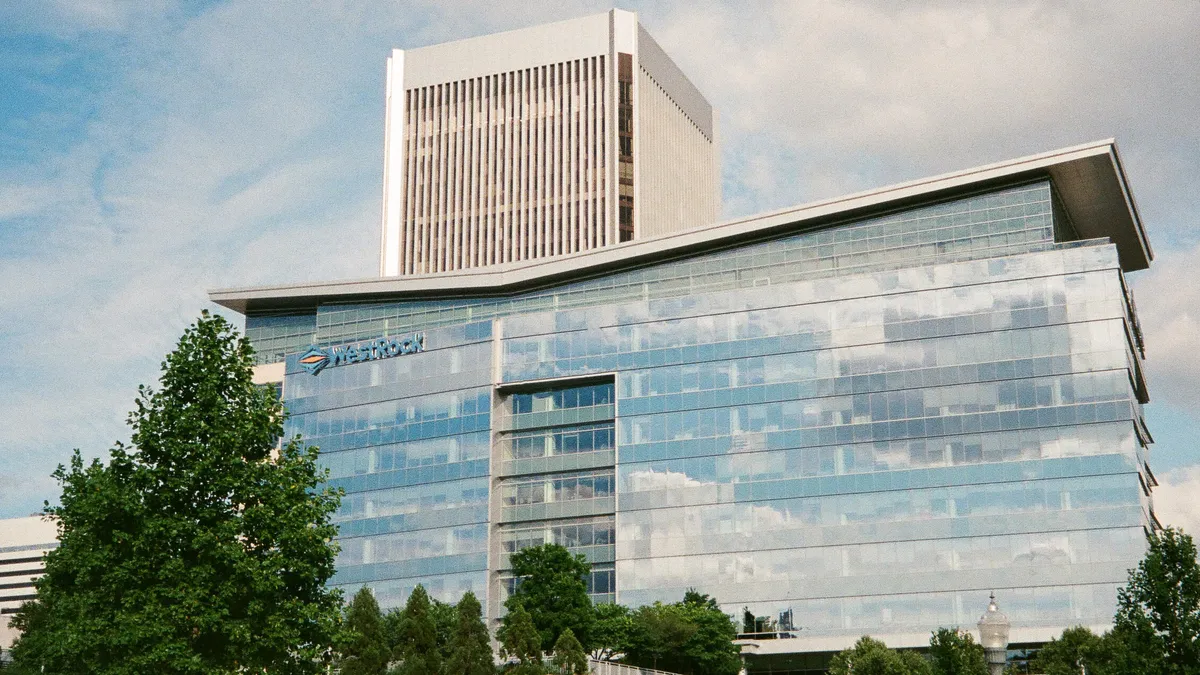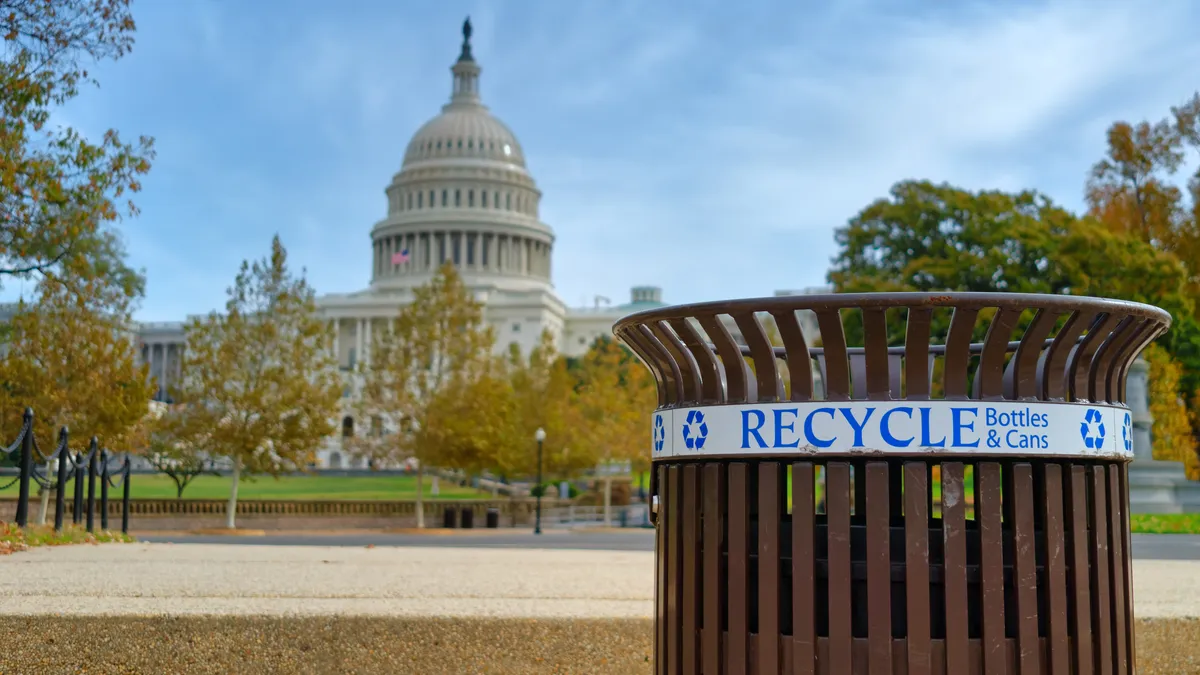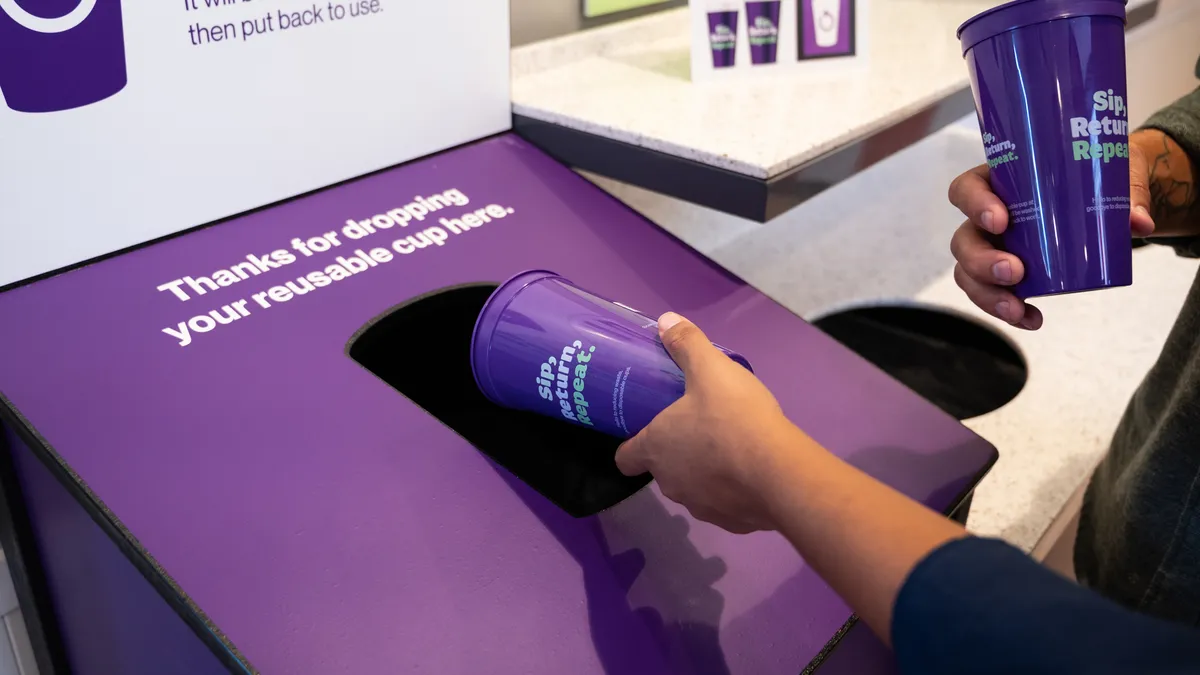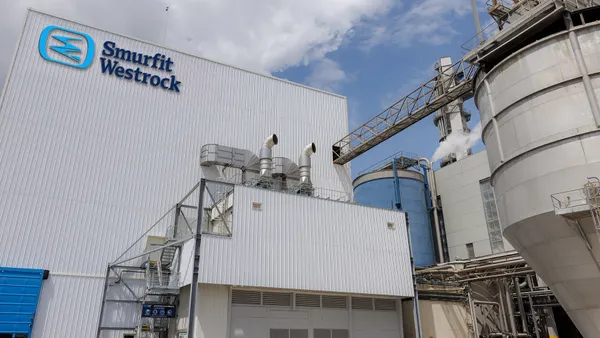- Demand dips: Although WestRock’s overall earnings were down for its fiscal second quarter, net sales beat Wall Street analysts’ expectations. On a Thursday earnings call, CEO David Sewell cited the primary causes of an “unprecedented drop in volumes” as a sharp and unexpected downturn in fiber demand, high inflation and shifting consumer spending. The resilient business model is helping WestRock to “successfully navigate the slower demand environment,” he said. Sewell said the company executed well in a challenging environment: “You have to remember, a year ago we were basically sold out.” Certain segments, such as consumer packaging, showed greater stability, in part due to “growing plastics replacement revenue,” he said.
- Optimization: WestRock executives during the call focused on optimization initiatives to improve profitability, specifically the closure of less efficient and underperforming plants. The demand downturn is allowing WestRock to accelerate some of its streamlining opportunities, Sewell said. On Tuesday, WestRock announced the closure of its mill in North Charleston, South Carolina, that will result in the loss of 500 jobs, following closures last year in Panama City, Florida, and St. Paul, Minnesota. The company plans further consolidation but declined to disclose yet which facilities are at risk. Executives simply said that the team is evaluating performance, efficiency, grades produced, fiber sources and competitiveness in the market. Additionally, CFO Alex Pease noted that certain regions have an abundance of facilities — for example, four to six facilities within 200 miles — and those could be ripe for consolidation; some of the overlap is because “we’ve inherited a bit of a congested footprint” via acquisitions, he said.
- Capital expenditures: While closing some facilities, WestRock execs anticipate about $1 billion in capital expenditures this fiscal year to maintain and improve assets that are viewed as providing a return on investment. They’re determining how best to “deploy our capital to build the next generation of facilities and really fundamentally shift our cost position” while improving productivity and reliability, Pease said. Sewell noted that digital investments like predictive analytics technologies are an area the company especially wants to invest in to further improve operations. For example, predictive technologies could minimize downtime by pinpointing areas with potential issues before they escalate — like in a case where machinery produces heavy vibrations, signaling a need for maintenance. “We’re piloting some pretty neat technologies that are giving us really good insights into our equipment and into our reliability,” Sewell said.
- Economic outlook: Execs anticipate that volumes will improve in the fiscal third quarter and project adjusted earnings before interest, taxes, depreciation and amortization to be $650 million to $750 million. Input costs for items such as energy and virgin fiber are expected to drop.

WestRock sees ‘unprecedented drop in volumes,’ will continue closing inefficient facilities
The earnings downturn is temporary, and streamlining measures are helping to “successfully navigate this slower demand environment,” said CEO David Sewell.

Recommended Reading
- How packaging manufacturers fared in Q1 By Packaging Dive Staff • Updated May 10, 2023
-
WestRock notes global paper market headwinds but touts sustainability investments as growing opportunity
 Waste Dive
Waste Dive













